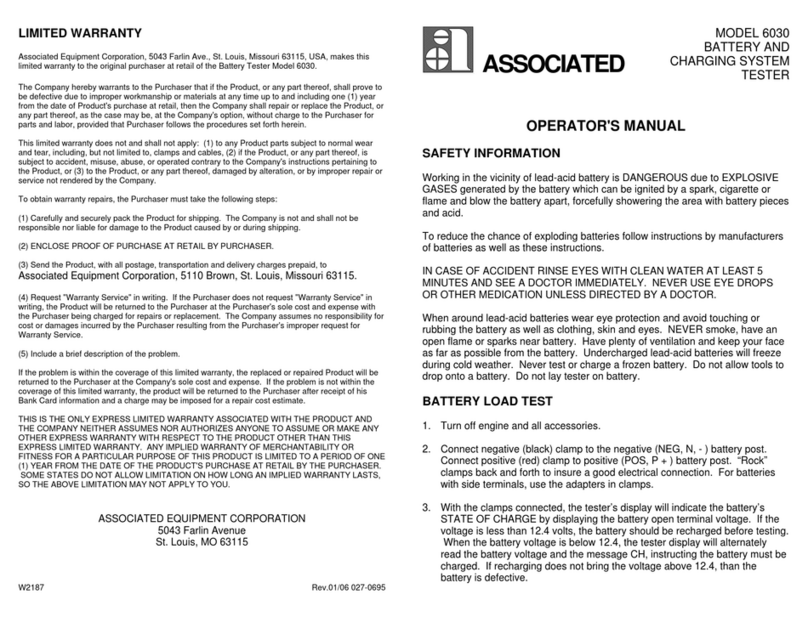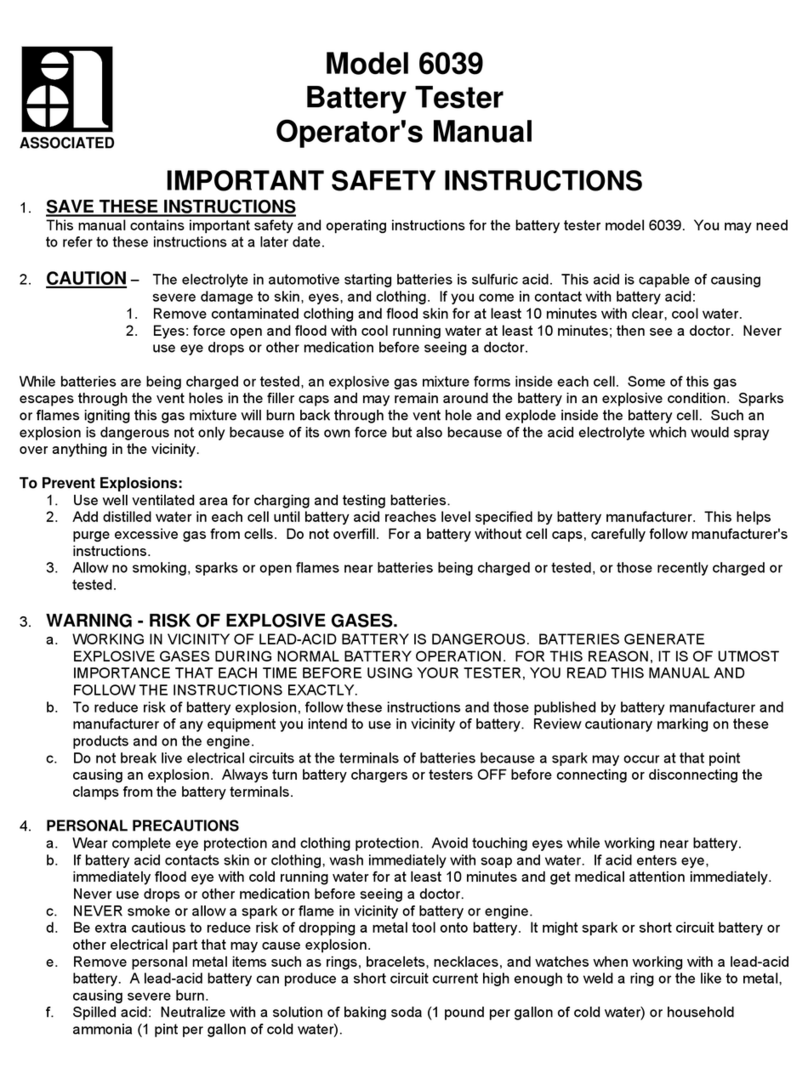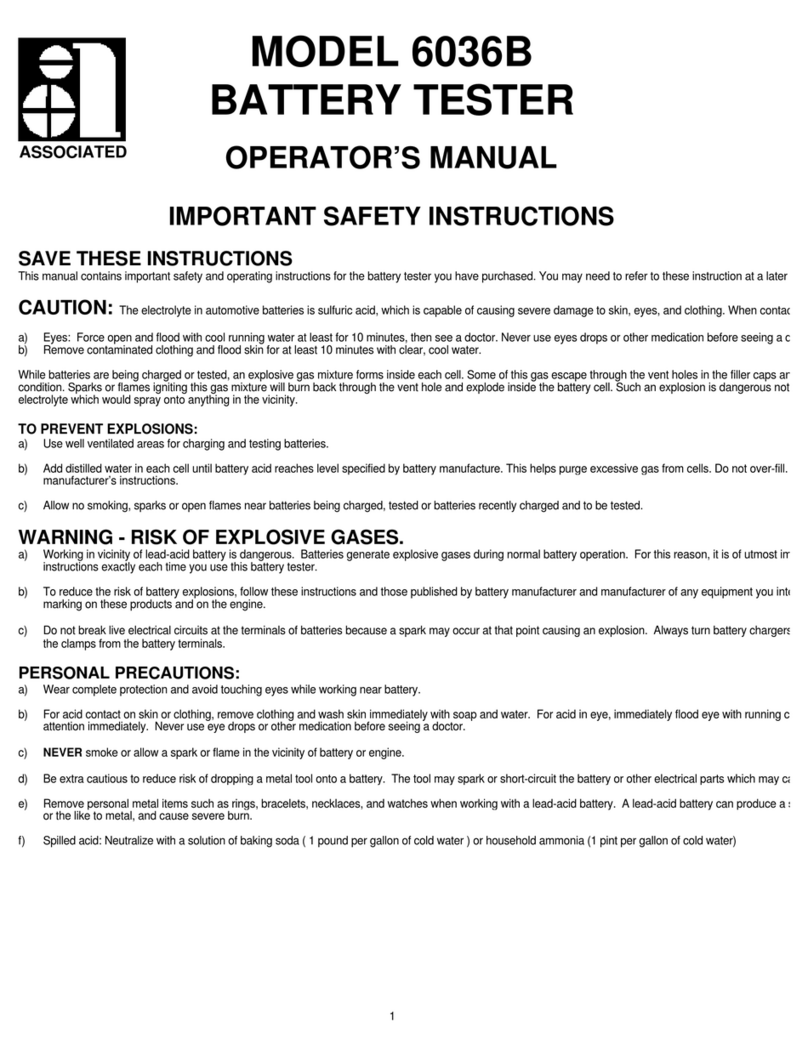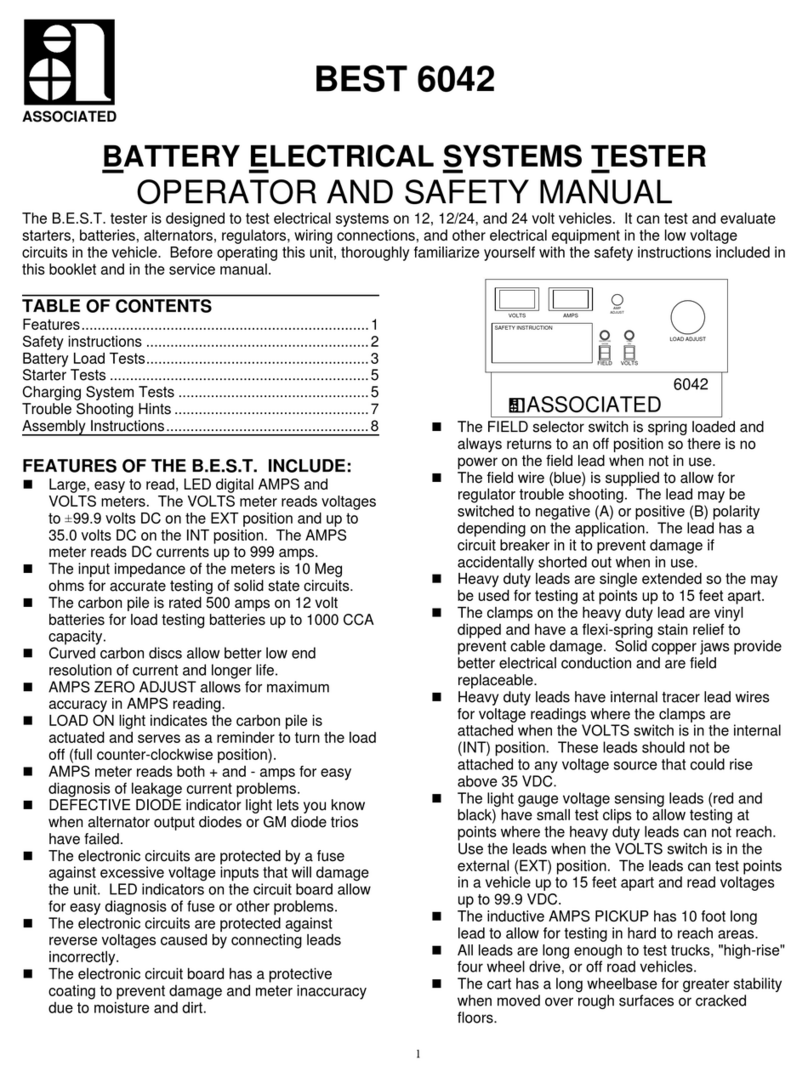
2
SPECIFICATIONS
Cabinet Dimensions:
Height: 17 inches Width: 14 inches Depth: 28 inches
ShippingWeight ........................ 108 Lbs..
Line Under voltage Alarm Point ............. 90VAC
StarterCurrentAvailable ................350 Amps.
Alternator Load .......................... 8Amps
MotorHP ..... ½HP(1HPOptional) Continuous Duty
MotorProtection ......AutomaticResetCircuitBreaker
Power Requirements ......120 VAC, 60 Hz., 20 Amps
Additional Features:
a) A sturdy, oversized “V” block with an easily
adjustable cast aluminum vise holds both
Alternators and Starters firmly and safely in
place during testing.
b) Slim-line design, heavy gauge steel cabinet and
base. Only 14 inches wide to maximize usable
bench top work space. Modular construction.
c) Constant voltage, current regulated solid-state
power supply with overload protection. A solid-
state voltage regulator correctly simulates actual
vehicle voltage conditions. No contacts to burn
or to wear out.
d) A ½ HP (1 HP Optional) continuous duty
industrial motor - clockwise or counter clockwise
rotation, automatic reset circuit breaker
protected.
Control Function Descriptions
Starter Test Switch - Used to energize Starters.
Power - On/Off Switch - Main power switch. Used to
turn on the unit; allows all tests to be performed.
Drive Motor Switch - Activates drive motor - Press
switch up for clockwise (CW) rotation units, down for
counter-clockwise (CCW) rotation units. Note: Most
Alternators will operate correctly in either direction.
Volt-Amp. Meter - In VOLTS mode indicates the
charging voltage (under load) of the Alternator or the
Generator (if so equipped with optional Generator Test
Lead Module). The VOLTS mode indicates alternator
DC output voltage; the AMPS mode shows starter free
running amperage draw. Unit automatically selects the
mode needed (VOLTS/AMPS).
Stator-Relay LED - Indicates proper operation of stator
or relay output terminal (if Alternator is so equipped).
LED brilliance may vary from alternator to alternator.
Alternator LED - Functions the same as the Alternator
lamp in the vehicle.
Trio LED - This LED is used primarily with the Delco 1-2
plug and other Alternators with internal regulators -
disregard it on all other types of Alternators.
Diode LED - When the LED is on, reject the Alternator.
Illumination is caused by excess ripple (AC).
Safety Interlock Switch - This safety switch is
controlled by the belt guard position. When the belt
guard is up, the Drive Motor Switch is inoperative.
DO NOT, UNDER ANY CIRCUMSTANCES, ATTEMPT
TO BYPASS THE OPERATION OF THIS INTERLOCK
!!
Fuse - This fuse is for the DC Alternator current supply.
Replace only with a 15 Amp. fuse (AGC-15). Failure to
replace it with the correct fuse may cause damage to the
tester and will void factory warranty.
Voltage Switch - Switch up for Alternators being tested
at 12 volts. Switch down for Alternators being tested at
24 volts. (This switch applies to Alternator/Generator
voltages only.)
Generator testing is done in the same manner if
equipped with an optional Generator Test Lead Module.
6 Volt Generators are tested in the 12 Volt mode by
dividing the voltage reading in half to give the operator a
correct reading.
Short/Low Voltage LED - If the LED turns on and an
audible alarm sounds the Alternator is either shorted or
the hook up is incorrect, thus causing a short circuit in
the battery or the field circuit. If the LED turns on and an
audible alarm sounds when testing Starters, the starter
is either shorted or the power line voltage to the test
bench is too low to perform a valid test
Ignition LED - Indicates proper operation of the auto
ignition system while starting. (Applicable on solenoids
having this terminal connection.)
A-B Switch - Switch up for “A” circuit - Switch down for
“B” circuit. Consult the operating instructions for proper
position.
Lead Socket - Socket for the Universal Lead Set of
Alternator test wires (For the Generator Test Lead
Module as well, if so equipped.)































